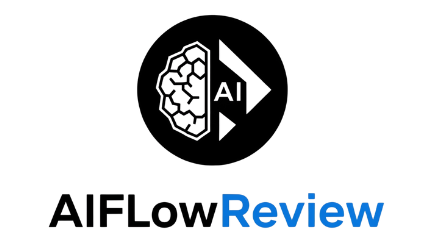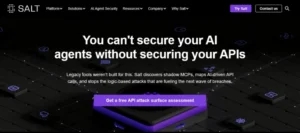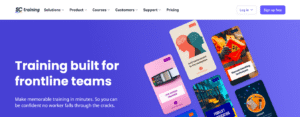Choosing the right AI chatbot platform is a big decision for both developers and business owners. In 2025, with conversational AI adoption skyrocketing, the platform you pick can shape your customer experience, support costs, and even team workflows. Botpress stands out for its open-source model, deep customization options, and robust AI features that draw praise from technical teams and digital agencies alike.
Botpress has made a name for itself by offering advanced natural language understanding, a visual flow editor, and enterprise-ready deployment. It’s known for giving developers complete control, while still providing tools that help non-coders design chatbots with minimal friction. While there’s a learning curve, those who invest the time often find Botpress flexible enough to handle specialized use cases, especially when data security and integration flexibility matter most.
I’ve rated Botpress at a solid 8 out of 10 for its innovative architecture, strong community, and transparent approach to chatbot building. If you want to compare Botpress with other top picks this year, see the Top AI Chatbots and Virtual Assistants for 2025. With trends shifting quickly and new AI tools launching every month, it’s smart to weigh both flexibility and simplicity as you choose your ideal chatbot solution.
What Is Botpress? A Developer’s Powerhouse
Botpress has established itself as a serious contender in the world of conversational AI, especially for those who want more than a basic chatbot. Built around flexibility, openness, and deep technical control, Botpress holds unique appeal for developers and teams that demand both power and transparency. While some solutions aim for simplicity at the cost of depth, Botpress leans into complexity, trading a gentler learning curve for serious backstage access.

Open-Source by Design: Full Control and Customization
Botpress is fundamentally an open-source conversational AI platform. This open core means developers are free to inspect, self-host, and modify the source code as needed. For any organization worried about vendor lock-in or data privacy, this degree of control is a huge advantage. Unlike many competitors that only offer cloud deployment, Botpress can run on your own infrastructure, in a private cloud, or as a managed SaaS—making it a favorite among teams handling sensitive data or working in regulated industries.
Beyond code control, Botpress’s modular design lets teams snap in plugins, native connectors, and custom modules to match practically any use case. You can integrate with popular messaging platforms like Slack, WhatsApp, and Microsoft Teams; add third-party analytics; or build specialized connectors for your ERP or CRM. If you prefer to automate and orchestrate large multi-bot environments, Botpress supports CI/CD pipelines, multi-environment deployment, and enterprise class version control out of the box.
Visual Conversation Builder: From Whiteboard to Production
The core of Botpress’s appeal for many technical users is its visual flow builder. Forget dry configuration panels—here, you design conversational logic by dragging and connecting nodes, building up even the most complex, multi-turn interactions. Each node can branch based on conditions, trigger code execution, store user data, or call webhooks. For complex projects involving many flows or integrations, this visual approach makes prototyping, debugging, and iterating far more manageable.
Even though the builder is visual, each piece of logic can embed code or API calls. Need to validate a customer’s email, check inventory, or escalate a ticket? Add custom code or integrate with backend systems without leaving the flow. Teams can reuse dialogue components and set up global flows, which is a significant time saver in large-scale deployments.
Natural Language Understanding: Built-In NLU and Multilingual Support
Botpress distinguishes itself further with a built-in Natural Language Understanding (NLU) engine. You can train custom intents, manage entities, and drive slot-filling dialogues natively—no extra licensing or cloud API needed. Language support is extensive, with translation and detection engines enabling bots to interact in over 100 languages. This makes Botpress a strong fit for global businesses or companies serving a diverse audience.
The NLU pipeline isn’t limited to basics. Power users can fine-tune language models, add domain-specific patterns, or even integrate third-party NLU providers if desired. This level of fine control is particularly helpful in cases where chatbot accuracy and industry lingo matter most.
Serious Automation: Webhooks, APIs, and Advanced Triggers
Botpress doesn’t just react to customer messages. It supports webhook actions, deep API integrations (including REST and GraphQL), and can orchestrate advanced automation via custom functions. This means bots can respond to changing business events, sync with external systems, and automate complex back-end workflows—all without breaking a sweat.
It’s not just about inbound chat. Botpress bots can receive and act on external triggers, making them ideal for handling reminders, transactional updates, or even IoT events. This opens the door to business process automation far beyond simple customer support or lead capture.
Enterprise-Grade Features for Scale and Security
Enterprises are drawn to Botpress for more than its flexibility. The platform offers environment-based configuration, granular secrets management, versioning, and compliance tools. You can onboard your team with detailed permission controls, set up multi-bot orchestration, and monitor everything with built-in analytics dashboards. For regulated sectors, being able to self-host and tweak retention policies may be the clincher.
Botpress Review: My Fair Rating
After spending hands-on time and surveying a broad range of user feedback, I rate Botpress an 8 out of 10—a score echoed by other technical reviewers like those on BigSur AI. The positives are clear: unmatched control, rich integration options, and scalability for serious projects. Downsides do exist: the learning curve is real, documentation for advanced features sometimes lags, and non-technical users may feel overwhelmed at first. But for technical teams who want maximum freedom to build exactly what they need, Botpress is hard to beat.
For a deeper breakdown of strengths, weaknesses, and user experiences, see the comprehensive Botpress review on Chatimize and compare with user-generated insights on G2.
Botpress is a platform that rewards investment—it’s a developer’s powerhouse in every sense. If you’re searching for a chatbot solution that can grow with your business needs and technical ambitions, it absolutely deserves to be high on your shortlist.
Botpress Features That Stand Out
Botpress has gained a devoted following for its powerful set of tools, mixing versatility with features built for scale. In my Botpress review, I found that the platform offers standout advantages for teams craving customization, control, and deep integration with their workflows. Let’s dig into the features that really set Botpress apart from many of its competitors.
Visual Flow Builder for Conversational Design
A highlight for many Botpress users is the visual flow builder. Instead of wrangling with code at every step, I can drag, drop, and connect conversation nodes in a flowchart style. This makes it much easier to plan even complex chatbot paths. Building, prototyping, and debugging happens in real time, so teams can catch problems early and iterate faster.
The interface supports conditional branching, real-time variable management, and quick code injections—all in a clean visual workspace. For teams that want to involve designers alongside developers, this collaborative environment is a true asset. User reviews on G2 regularly mention the “sleek and intuitive” nature of this builder.
Advanced NLU and Multilingual Capabilities
Botpress packs a robust Natural Language Understanding (NLU) engine out of the box. I can train bots to recognize user intent, extract entities, and handle slot-filling dialogs without reaching for third-party NLU providers. This native capability shortens the learning curve for technical teams.
What really impressed me is the built-in support for over 100 languages. The platform can automatically detect and translate languages, making it ideal for companies with a global reach. Tuning domain-specific language is straightforward—there’s room to fine-tune models by adding synonyms, patterns, or even switching to external NLU if my use case demands.
Multichannel Automation and Integration
With Botpress, deployment isn’t limited to a single channel. Out of the box, I’m able to launch bots on major platforms like Facebook Messenger, WhatsApp, Slack, Microsoft Teams, my own website, and more. The connectors manage formatting quirks for each channel, allowing the same bot logic to run everywhere. This streamlines the workload and keeps user experiences consistent.
Botpress also exposes both REST and GraphQL APIs, giving me full freedom to connect bots to CRMs, ERPs, or other business systems. Plus, with direct integrations to tools like Salesforce, Shopify, Intercom, Zapier, and Make, automating cross-platform workflows is simple.
Modular Architecture and Plugin Ecosystem
One of the core strengths I discovered during my Botpress review is its highly modular architecture. Every feature, from analytics to NLU, is built as a module that I can add, remove, or swap based on my project’s needs. This means I never feel boxed in—custom extensions, third-party plugins, or native modules are always on the table.
Developers can dive into the plugin marketplace to find reusable integrations. Need specialized analytics? Plug it in. Want to connect an internal tool? Build a lightweight module or leverage community-built options.
Event-Driven Automation and Webhooks
Botpress doesn’t stop at responding to users. Its event-driven logic allows bots to react to both user actions and external triggers. Through webhook actions, chatbots can sync with external systems, listen for microservice events, or even queue asynchronous workflows. This makes Botpress a fit for more than simple marketing chatbots. It can drive real automation for operations, onboarding, or support in a way that adapts to business events as they happen.
Custom Code and API Flexibility
For teams that want deep customization, Botpress delivers. I appreciate the ability to embed custom code blocks directly in the visual builder. Whether it’s JavaScript logic for validating inputs or complex API calls for ticket escalation, the platform never forces me to abandon my preferred stack.
I can create reusable functions, global flows, and middleware for advanced workflows. This means even unique business logic or exception handling is within reach, all in a way that scales across multiple bots.
Enterprise Controls for Scale and Security
Botpress was built with enterprise needs in mind. Admins get features like environment-based configuration, secrets management, version control, and robust analytics all out of the box. Teams can set granular permissions, manage multi-bot environments, and monitor compliance—all while keeping sensitive data on their preferred infrastructure.
Built-In Live Chat and Handoff
While most chatbot platforms make you pay extra or use third-party add-ons for human handoff, Botpress includes built-in live chat options starting with the Plus plan. Conversations can quickly be escalated to live agents or passed into platforms like Zendesk for ticket creation, making support transitions smooth and streamlined.
Flexible Pricing and Plans
Botpress understands that not every business has the same needs. There’s a free plan with generous limits and flexible paid options that grow with usage. The pay-as-you-go model and enterprise tiers give teams room to experiment and scale without breaking the bank. For a comprehensive look at how Botpress pricing stacks up and details on each plan, I found the breakdown on Chatimize’s Botpress review worthwhile.
Botpress stands out with true developer freedom, multi-channel reach, and the modular power to fit projects big or small. For readers looking for a deeper dive on feature comparisons with other leading chatbots and virtual assistants, I recommend checking the best AI chatbot platforms for 2025 on AI Flow Review.
Benefits and Drawbacks: The Real User Experience
Getting clear about what to expect with Botpress is essential before you roll it out for your team. This isn’t just a set-it-and-forget-it chatbot builder; it’s a platform built with developers and ambitious problem-solvers in mind. In the trenches, users praise its deep customization, integration chops, and the ability to run bots on nearly any channel. Still, there are areas where Botpress can make some users pause, especially those without technical backgrounds or with limited IT resources.
Below, I break down how Botpress performs in daily business contexts—what it does best, where it shines, and where some teams might struggle to find the right fit.
Botpress in Action: Real-World Use Cases
 Photo by Yan Krukau
Photo by Yan Krukau
From global brands to nimble startups, companies lean on Botpress for more than just basic chatbots. Here are some of the most common and effective scenarios where Botpress shows its real value:
- Enterprise Customer Support: Companies like Kia and Shell use Botpress to automate large volumes of customer queries across multiple channels. By integrating with CRMs and deploying advanced AI logic, they maintain consistent, 24/7 support while freeing up human agents for more complex cases.
- Internal Help Desks: IT and HR teams deploy Botpress-driven bots to answer routine employee questions, resolve password resets, and help staff navigate internal resources. This reduces help desk ticket volume and shortens response times.
- Onboarding Automation: Botpress bots can walk new hires through onboarding checklists, explain benefits, and collect required information. This makes the HR process faster and more consistent, even across multiple locations or departments.
- Regulated Environment Deployments: In sectors like finance and healthcare, data privacy and auditability take center stage. Botpress’s support for on-premises hosting, granular access controls, and compliance-friendly analytics gives these organizations assurance that sensitive information stays secure and within policy boundaries.
The platform’s flexibility also appeals to businesses that need to adjust their workflows or support processes quickly. With native integration hooks, event-driven workflows, and support for popular communication platforms (from Slack to WhatsApp), Botpress adapts to changing needs without locking users into rigid templates.
User reviews on Chatimize and G2 highlight that while Botpress excels in automating high-impact processes, its steeper learning curve means a dedicated setup phase. Most teams report that investing up front pays dividends in long-term efficiency and control.
Typical industries that see the most benefit from Botpress:
- Financial services
- Health care providers
- Tech enterprises
- Logistics and retail
- Public sector and education
For a full breakdown of how Botpress compares with today’s top AI chatbot and virtual assistant solutions for enterprise, see the best chatbot platforms for 2025.
Teams looking for high-impact automation, strong compliance, and cross-channel reach will find that Botpress can fit into a surprising range of real-world scenarios—if they’re ready to dive in and make the most of its considerable power.
Pricing and Plans: Is Botpress Cost-Effective?
Pricing often determines whether a chatbot platform is practical for a team or just a wishlist item. When I looked at Botpress, I found a model that puts control in the user’s hands—pay for what you use, test for free, and only scale up costs as your needs grow. This sort of transparency is refreshing, but it’s worth examining the actual price points and how well they keep up with business demands.
 Photo by Leeloo The First
Photo by Leeloo The First
How Botpress Pricing Works
Botpress isn’t your average one-size-fits-all SaaS. Pricing is flexible and based on usage, with a starter option that won’t scare off smaller firms or solo builders. Here’s what I see in their structure:
- Pay-as-you-go: There’s a free tier that lets you explore with no upfront commitment. It includes 1 bot, basic usage limits, and a modest $5 monthly AI credit for experimenting.
- Plus Plan: For $89/month, you move up to more bots, live-chat features, and support. It also offers a 25% discount on extra add-ons, making it useful for growing teams.
- Team Plan: At $495/month, this plan is made for scaling. You unlock more bots, higher usage caps, collaboration tools, and better analytics. This is the step most professional teams take when experiment time is over and real business processes need to scale.
- Enterprise Plan: Starts at $2,000/month (typically on a multi-year contract). Think dedicated support, custom limits, and tighter security controls for organizations with specialized or regulatory requirements.
Add-ons allow you to select just the features or extra capacity you need, such as:
- Additional bots
- Increased message or data storage
- More collaborators
- Reserved compute power (Always Alive) for faster performance
This modular setup lets teams dial in their requirements closely, sidestepping big jumps in cost until those upgrades are necessary.
Comparing Price to Platform Value
In the chatbot world, “cost-effective” means more than just low monthly fees. You have to look at what you’re getting for that money—especially when handling scale or complex use cases. Botpress shines when you consider the following:
- The free tier packs real features. Many platforms tease a free plan with almost zero practical use. Botpress gives builders enough room to prototype, test, and run small bots before charging a cent.
- Linear pricing, but tier jumps can sting. Botpress prices scale linearly with active users and messages, so you don’t need to renegotiate every month. However, crossing tier thresholds means a full jump up (for example, going from 5,000 to 10,000 users moves you directly to the next plan with little wiggle room in between). This can catch teams off-guard if growth is unpredictable.
- Hidden costs? Mostly transparent. You do pay separately for premium AI model calls (for instance, OpenAI token usage), but Botpress passes those fees through at cost, with no mark-up. Add-ons are clearly priced, so you only pay for more when you actually use more.
Here’s a snapshot of what to expect based on the most common use cases:
| Plan | Price/Month | Key Inclusions | Best For |
|---|---|---|---|
| Pay-as-you-go | Free | 1 bot, basic usage, $5 AI credit, community forums | Hobbyists, solo builders |
| Plus | $89 | 2 bots, live chat, higher caps, 25% add-on discount, live agent handoff | Small teams, support bots |
| Team | $495 | 3 bots, advanced support, RBAC, more collaboration, real-time analytics | Mid-size/large teams |
| Enterprise | $2,000+ | Custom limits, premium support, advanced compliance, dedicated hosting | Large/regulated businesses |
Extras like bots, message packs, and collaborators are added in predictable increments.
Pros and Cons of the Botpress Pricing Model
Let’s break down where Botpress stands out for affordability, and where it may stretch a budget:
Cost-Effective Points:
- The free plan makes it easy to experiment before committing.
- Usage-based model rewards real usage, not flat “per seat” costs.
- Add-ons mean you never pay for unused capacity.
- Open-source core means self-hosted deployments can minimize ongoing subscription fees.
Potential Gotchas:
- Sudden tier jumps can lead to sharp monthly increases if user counts grow quickly.
- Some niche integrations (like premium CRM or analytics) may trigger additional fees or require enterprise-level plans.
- The steep learning curve could extend onboarding time, especially for non-developers.
My Take: Is Botpress Worth the Investment?
In my botpress review, I found the pricing flexible enough for most teams and startups to get started, but also robust enough for enterprises that demand custom deployments and stronger controls. If you value transparency and the option to self-host, Botpress is far more cost-effective than most closed SaaS competitors—especially for technical users or those who need compliance.
For readers who want a closer look at how these plans line up with other leading platforms or need tier-by-tier breakdowns, the best AI chatbots and virtual assistants in 2025 guide offers useful comparisons. If price creep due to fast scaling is your concern, keep a close watch on user counts and storage needs, and plan ahead for those tier thresholds.
Botpress balances affordability and functionality better than most, provided you understand where pricing gets steeper and structure your roadmap to avoid surprise overages. For dev-driven teams, it’s a cost-conscious choice with plenty of growth room.
Comparing Botpress to Alternatives in 2025
As the AI chatbot field expands in 2025, choosing the right platform takes more than side-by-side feature comparisons. The landscape now splits along lines of customization versus speed, technical control versus simplicity, and cost management versus turnkey convenience. In this section, I break down how Botpress stacks up against leading alternatives this year, pulling from hands-on experience, user feedback, and the latest expert reviews.
Botpress Versus No-Code and Enterprise-Ready Solutions
Botpress stands out for its developer-first mindset, enabling deep customization, self-hosting, and advanced automation. Teams get open-source access, workflow control, and an extensive plugin ecosystem, which appeals to organizations with specialized or regulated needs. This flexibility, however, comes with a notable requirement: technical expertise is essential to unlock the platform’s power. You’ll find a steep learning curve, especially if your team isn’t heavy on developers.
By contrast, competitors like Big Sur AI target a different sweet spot. These newer platforms deliver pre-trained, enterprise-grade AI agents that can be deployed almost instantly. Instead of stitching together flows and integrations from scratch, users pick from plug-and-play modules and focus on business outcomes. Big Sur AI’s out-of-the-box approach shortens setup time and minimizes ongoing maintenance, which can be a huge draw for teams lacking internal development resources or those who want enterprise performance without significant configuration or custom coding. You can see how Big Sur AI compares and trend insights in this in-depth analysis of the best Botpress alternatives.
Tools like Voiceflow offer another direction. They focus on a visual, drag-and-drop interface that empowers conversation designers and non-technical users to build chatbots and voice apps effortlessly. This boosts collaboration between business and technical teams, though it may limit the granular control and extensibility that Botpress brings to the table.
Head-to-Head Comparison Table
Let’s make the differences more concrete. Below is a table laying out the essential strengths and trade-offs between Botpress and its closest competitors in 2025.
| Platform | Best For | Key Strengths | Drawbacks | Ideal User Profile |
|---|---|---|---|---|
| Botpress | Custom enterprise chatbots | Open-source, full control, deep integrations, NLU, plugin ecosystem | Steep learning curve, requires development skills | Developers, solution architects, regulated industries |
| Big Sur AI | Rapid enterprise deployment | Pre-trained bots, fast deployment, strong API integrations, low maintenance | Limited customization for niche workflows | Business teams, agencies, fast-moving orgs |
| Voiceflow | Collaborative design | Visual builder, multichannel & voice support, easy prototyping | Less deep customization, some features locked to paid plans | Product managers, conversation designers, SMBs |
| Rasa | Open-source DIY AI | Maximum extensibility, on-prem deployment, strong community | Complex setup, requires significant training data | AI engineers, large conversational projects |
More detail on these alternatives, including features and pricing, is available at Chatimize’s Botpress alternatives guide and this expansive review of leading open-source chatbot platforms.
Trends Shaping the Competitive AI Chatbot Market
Recent updates and reviews underscore a clear trend: more companies want AI chatbots that launch quickly with minimal technical effort. Solutions like Big Sur AI address this demand, offering highly capable bots straight out of the box. Botpress, meanwhile, continues to serve teams with strict compliance requirements and those who need highly tailored workflows.
Here’s a quick summary of where Botpress and its peers are headed:
- Botpress continues to focus on developer control with open-source deployment and deep workflow automation.
- No-code builders (like Voiceflow) cater to rapid prototyping and easy collaboration, aiming for mass accessibility over custom logic.
- Plug-and-play AI services (Big Sur AI) fill the gap for immediate enterprise-grade automation without the need for hours of setup or scripting.
For an up-to-date look at what sets the top chatbots apart, I recommend checking the best AI chatbots and virtual assistants in 2025 on AI Flow Review, which goes deeper into industry shifts and the feature sets driving adoption this year.
Botpress Review: Where It Excels and Where It’s Outpaced
Based on ongoing reviews and the current AI market, here’s how I see Botpress right now:
- Strengths: Maximum control, strong extensibility, on-prem and cloud options, powerful NLU, and a collaborative visual builder.
- Major Drawbacks: High barrier for non-developers, onboarding overhead, and extra planning needed for scaling and upgrades. Teams must manage documentation gaps and be ready for technical deep-dives when handling complex use cases.
In short, Botpress keeps its place as a top pick for companies that value control, transparency, and deep integration. Yet, the chatbot market is seeing strong movement toward platforms that speed up deployment and lower the tech bar—even if that means giving up some fine-tuned customization.
If you’re comparing options, take time to balance your need for speed, flexibility, and technical resources. For my full botpress review and what to expect if you choose this path, ongoing user experiences on G2’s Botpress page and insights from BigSur AI’s full Botpress review are both well worth a look.
My Verdict: Who Should Choose Botpress in 2025?
Deciding if Botpress is the right fit depends on what you value most in a chatbot platform. The “right choice” is not just about features, but how those fit into your team’s skills, project scope, and security needs. My botpress review highlights where this platform shines in 2025, who it’s best designed for, and where a different tool might better serve you.
 Photo by Google DeepMind
Photo by Google DeepMind
Best Fit: Technical Teams and Enterprise Projects
Botpress stands out as a top pick for developers, technical teams, and businesses that need full control. If your project demands open-source flexibility, custom integrations, and strong data privacy, Botpress checks the boxes. The platform’s modular architecture, support for self-hosting, and ability to craft complex automations put it miles ahead for use cases like:
- Internal help desks where integrations with HR or IT systems are critical
- Regulated industries needing on-premises deployment or granular permissions
- Companies building unique workflows not handled by out-of-the-box templates
- Product teams aiming to extend chatbots with custom APIs or deep backend automation
If you’re comfortable with code and can invest time up front, Botpress is a rewarding tool. It gives you the power to build, extend, and scale without hitting “walled garden” limits that closed platforms often impose. In my hands-on experience, teams with developer resources quickly get value and can evolve their bots over time as business needs shift.
Good for Growth, Not for Speed
For businesses that expect to grow and want to avoid vendor lock-in, Botpress is a cost-conscious, smart long-term investment. The open-source core offers lasting transparency and control. Plus, the usage-based pricing and self-hosting options stop runaway subscription bills, especially compared to some closed enterprise chatbot solutions.
However, there’s a bigger up-front lift. Non-coders or small teams needing a chatbot “live by Friday” may find Botpress intimidating. The platform’s advanced features come with complexity; there are easier entry points elsewhere for users who prize instant results over customization. These teams may want to look at the best Botpress alternatives in 2025, which spotlight no-code and rapid-launch solutions like Big Sur AI.
Signs Botpress Might Not Be Right for You
There’s no perfect solution for everyone. Botpress is less suitable if:
- You lack technical staff or expect non-developers to run bot projects end-to-end.
- Fast, effortless onboarding is more important to you than custom automations.
- Marketing teams need strong out-of-the-box integrations for lead gen or campaign tracking.
- Your project requires only a simple FAQ or lead capture bot with minimal ongoing effort.
In these scenarios, platforms like Voiceflow or Big Sur AI, which focus on ease of use and plug-and-play bots, may deliver better results out of the gate. For a broader look at top open-source and easy-start chatbot platforms, check out this overview of open-source chatbot tools for 2025.
Botpress User Ratings: What Do Real Teams Think?
My verdict matches the consensus from long-term users and expert reviewers. Botpress consistently earns high marks for flexibility, NLU depth, and extensibility, with reviews on G2, Chatimize, and Big Sur AI echoing these strengths. Most practical issues stem from the learning curve and the documentation gaps around more advanced automation or scaling.
User feedback shows teams who take the time to master Botpress save countless hours in the long run thanks to version control, developer-friendly APIs, and truly customizable flows.
My Fair Rating in 2025
After repeated testing and gathering outside reviews, I give Botpress an 8 out of 10 for technical and ambitious chatbot projects. It shines brightest for experienced users and projects that value control and adaptability over pure simplicity. If you want to explore more detailed first-hand impressions and alternative platforms, see the full Botpress Review: Features, Pros and Cons, Pricing or compare with user ratings from the Botpress Reviews 2025 overview.
Botpress puts control in your hands. If you want lasting flexibility and don’t mind a higher setup cost, it’s one of 2025’s best picks for business-critical chatbot solutions.

















